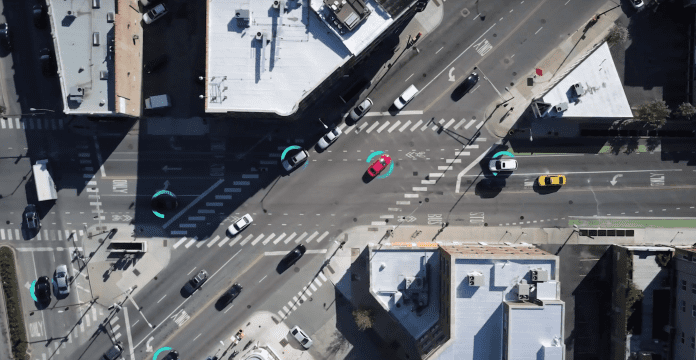US carrier Verizon and Dutch mapping company HERE are pairing 5G connectivity and multi-access edge computing (MEC) with location data and autonomous vehicle knowhow as part of a co-innovation exercise to hone various consumer and industrial IoT use cases.
The two companies are working, at the outset, on vehicle and pedestrian safety technologues, such as collision avoidance, and better location identification and navigation for ridesharing pick-up/drop-off and delivery services.
HERE will provide Verizon with access to a range of location data, SDKs, and APIs from the HERE platform.
The first of the two proofs will look at how to increase pedestrian and driver safety by combining 5G capabilities with high-definition live mapping and computer vision technologies to create a vehicle-to-network (V2N) communication system.
HERE’s so-called Live Sense developer kit identifies vehicles, pedestrians, bicycles, and other road users, from a vehicle-mounted mobile phone. Data will be sent to Verizon’s edge-based compute functions, in its 5G network, where AI algorithms will seek to predict travel paths and warns vehicles of potential collisions.
The second proof, for a ‘visual positioning service’ (VPS), will use proprietary 3D positioning algorithms to analyze images and videos for accurate sub-meter positioning in near real-time. Data will be carried over Verizon’s 5G network; data processing will be done at the network edge.
Verizon said VPS is a complementary solution to signal-based location technologies, such as GPS, because it does not rely on a remote server and is less hindered by tall buildings or signal deserts. The technology also works for indoor use, it said.
The pair will also develop new connected services to benefit a range of industries, they claimed – “from automotive to smart cities, to transport and logistics”.
Edzard Overbeek, chief exeutive at HERE, commented: “5G will be a game changer for many use cases in every industry… Our partnership with Verizon not only allows us to tap into the innovation potential of 5G but also highlights what is possible when this technology is location intelligence enabled: connected services that are designed to make our world safer, more efficient and environmentally sustainable.”
Ashley Vogt, senior product manager for advanced mapping at Verizon, said: “By harnessing the power of Verizon 5G [network] and 5G edge [capabilitues], along with HERE’s proprietary 3D positioning algorithms, we are driving together toward a safer and more precise future.”

